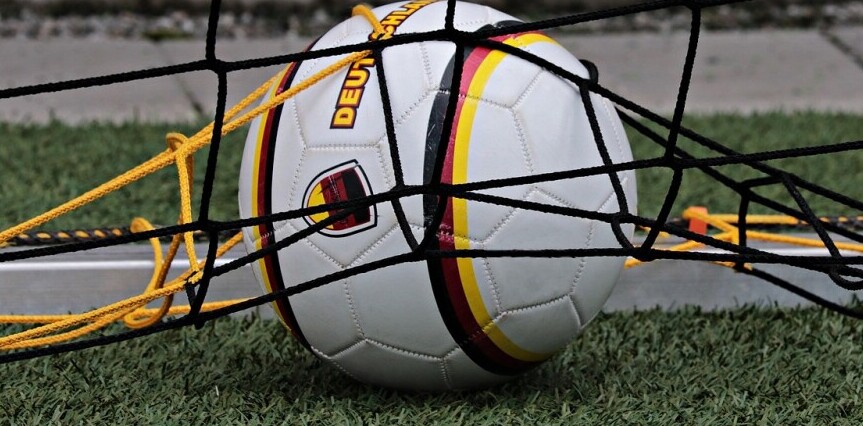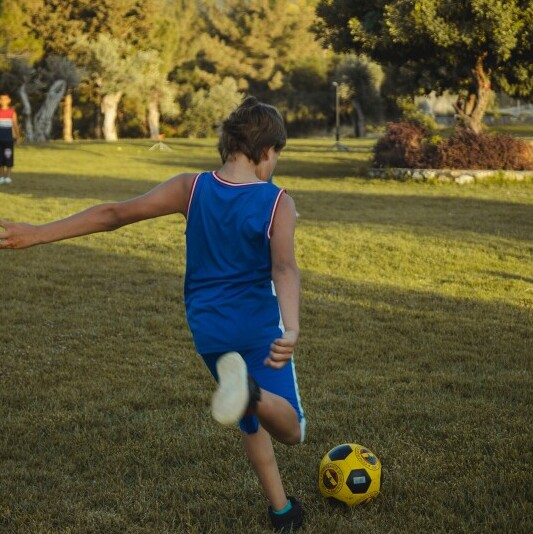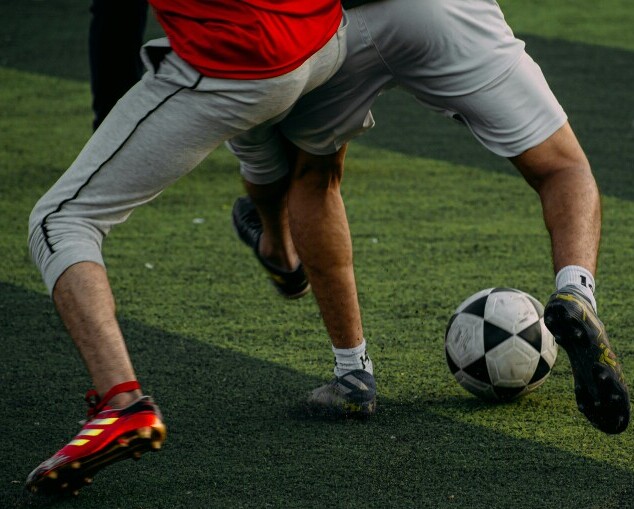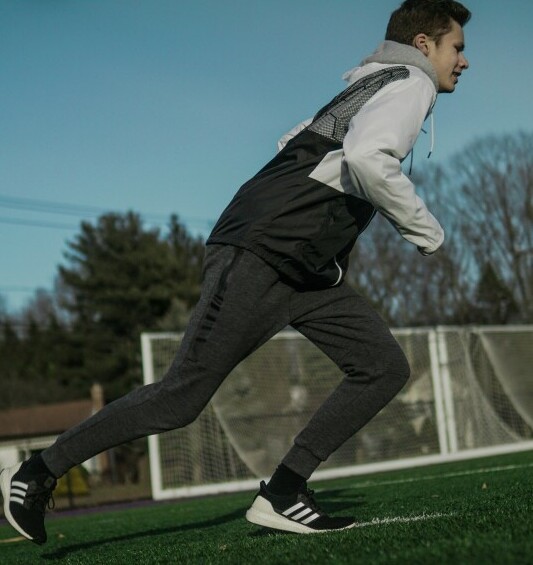 Playing soccer for a full 90 minutes takes more than just footwork and tactics. It’s a real test of stamina and mental toughness. I’ve seen so many players fade during the last 20 minutes, not because they lack skill, but because their bodies and minds just aren’t ready to keep pushing that hard for that long. Solid endurance is what keeps you sprinting, chasing down opponents, and making those late-game runs when everyone else is slowing down.
Playing soccer for a full 90 minutes takes more than just footwork and tactics. It’s a real test of stamina and mental toughness. I’ve seen so many players fade during the last 20 minutes, not because they lack skill, but because their bodies and minds just aren’t ready to keep pushing that hard for that long. Solid endurance is what keeps you sprinting, chasing down opponents, and making those late-game runs when everyone else is slowing down.
Maybe you’ve tried to keep up in a challenging match and found yourself running out of breath or feeling heavy legged by halftime. The good news is, building up soccer endurance is totally doable with the right plan, a bit of patience, and some smart training. Here’s how I approach getting fit enough to play at a strong pace the entire match.
This guide covers the best methods, workouts, and tips for creating real gameready endurance, so you’re not just making it through 90 minutes. You’re making an impact all the way to the final whistle.
Step 1: Set Your Endurance Goals for Soccer

Soccer endurance is about more than just running in circles until you’re tired. The game is all about bursts of speed, quick changes in direction, jogging, and short breaks. So, training needs to reflect that pace.
Things to Think About:
- Do you find yourself running out of steam before the second half is over?
- Are you able to keep up with fast plays and recover in time for the next sprint?
- Would you like to increase your average distance covered per game?
Common Soccer Endurance Goals:

- Maintaining a good pace throughout all 90 minutes.
- Staying sharp for late-game decision-making.
- Bouncing back quickly after high-intensity sprints.
- Reducing muscle fatigue in the last stretch of the match.
Identifying your specific goals helps tailor your training and keeps you motivated when workouts get tough.
Step 2: Build a Balanced Endurance Training Routine

Great soccer endurance is a blend of aerobic (longlasting, steady effort) and anaerobic (short, intense bursts) fitness. Here’s my approach for building a well rounded training plan that fits a soccer player’s unique needs.
Key Training Elements:
- Long Distance Running – Go for 30-45 minute runs at a steady pace 1-2 times a week to lay the aerobic foundation.
- Interval Training – Alternate between sprints and jogging. For example, sprint for 30 seconds, jog for 90 seconds, repeat 8-12 times. This mimics the startstop nature of matches.
- Tempo Runs – Run at a “comfortably hard” pace for 15-20 minutes. These workouts teach your body to handle faster speeds over time.
- Agility and Plyometrics – Include ladder drills, cone work, and jump circuits. These moves help your muscles adapt to sudden movement changes while keeping your heart rate up.
Sample Week at a Glance:
- Monday: Long, steady run
- Wednesday: Interval sprints on the field
- Friday: Tempo run and agility ladders
- Weekend: Match or scrimmage play
Mixing up your workouts like this is super important so you don’t get bored or burn out, and you get all aspects of endurance covered. To make your training even more dynamic, swap course locations regularly or join a training group for extra motivation. Remember, consistency is key to improvement.
Step 3: Add Sport Specific Conditioning Drills
General fitness is great, but nothing beats soccer specific work for match fitness. I like to use drills that bring together technical skills and involve real game movement.
Ideas That Work Well:
- Shuttle runs (with and without the ball) for stopstart sprints.
- Timed dribbling circuits across the width and length of the field.
- Smallsided games (e.g., 5v5, 7v7) at a high intensity, keeping rest short and pace high.
- Conditioned games, where you add extra running penalties for losing teams or certain positions.
This kind of conditioning is pretty handy, because it doesn’t just test your legs. It keeps your brain in the game, working on vision and decision-making even while tired. Also, try practicing game scenarios near the end of your session, when fatigue is high, to get accustomed to performing skills when tired. This can make a real difference when the game is on the line.
Step 4: Focus on Recovery and Injury Prevention

Pushing yourself hard is only part of the story. Without good recovery, your body won’t adapt; it just breaks down. Getting in a solid cooldown, stretching, and taking care of your body makes a huge difference in consistency. This also helps minimize injuries, which can totally ruin your progress.
Easy Recovery Habits to Build:
- End every session with a five-minute jog and some light stretching.
- Use a foam roller or massage ball to loosen up tight spots, especially in your calves, thighs, and hips.
- Make sleep a priority, aiming for at least 7-9 hours if possible.
- Eat protein and carbs within 30-60 minutes posttraining to rebuild those tired muscles.
Treating your body right between sessions is just as important as what you do at practice. You might want to add a rest day every week to give your muscles time to adapt and grow stronger. If you notice any persistent aches, don’t ignore them: see a professional if you need to. Taking care now protects your longterm development.
Step 5: Pay Attention to Fuel and Hydration
Your body can only go so far without solid fuel and proper hydration. During tough training, you lose a lot of fluids and burn through your energy reserves, so what you eat and drink can be a gamechanger, especially during those last 20 minutes on the field.
Game-Day and Training Nutrition Tips:
- Have a carbheavy meal 3-4 hours before matches or long workouts, such as rice, pasta, or potatoes with lean protein.
- Snack on fruit or an energy bar 30-60 minutes before playing if you need to top up energy stores.
- Bring a water bottle to every session and drink regularly, even before you feel thirsty.
- After matches, eat a balanced meal to recharge and support muscle recovery.
Skipping meals or forgetting to hydrate just makes it harder to build real endurance, so fueling up is really important if you want to perform well for the whole match. Consider bringing a postworkout snack for the ride home, like chocolate milk or a smoothie, to help speed up recovery even faster.
Step 6: Track Progress and Stay Consistent
Improving your 90-minute performance isn’t something you see overnight. Sticking with your program and checking in on progress helps keep motivation high and lets you know when it’s time to take it up a notch.
Simple Ways to Track:
- Count how many highintensity sprints you can perform per session and aim to add more each week.
- Wear a fitness watch or use an app to check your total distance during matches or training.
- Pay attention to how you feel in the last 10-20 minutes of scrimmages or games. Less fatigue is a good sign you’re improving.
- Keep a training journal or checklist for a handy visual reminder of your progress.
Consistency adds up faster than you think. Even when you feel like skipping a session, remembering your longterm goal can push you to lace up your cleats. Reach out to a teammate or coach for encouragement—it can help keep you accountable.
Common Questions & Endurance Troubleshooting
I get tired halfway through; what’s up?
Try mixing more interval work and soccerspecific drills into your training. Sometimes, nutrition or sleep can also be an issue. Doublecheck that you’re eating and resting enough.
How long does it take to build endurance for 90 minutes?
Most players notice real improvement within 4-8 weeks of focused endurance work, but it depends on your starting point and how regularly you train. Being consistent is what brings about lasting changes.
Are there any shortcuts?
Unfortunately, nothing beats putting in the time. Some folks use caffeine or energy gels for temporary boosts, but it’s smarter to stick to a solid training plan and healthy habits. Remember that sustainable endurance can only be developed through gradual and regular work, rather than quick fixes.
Action Steps for Boosting Your Soccer Endurance

- Write out your main endurance goals for soccer.
- Build a weekly routine that mixes distance, intervals, and agility workouts.
- Add in soccerspecific conditioning and habits that keep you moving at game pace during practice.
- Stay consistent with recovery, nutrition, and tracking your progress.
Building the kind of stamina that lasts a whole match isn’t just for professionals—it’s pretty doable no matter your skill level. With steady effort and the right plan, you’ll be running strong long after the final whistle. Want to share your progress or have a favorite drill?
Drop a comment below and join the conversation!
